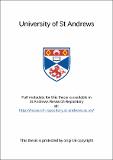Files in this item
Quantum chemical studies of intermediates in nitrosamine carcinogenesis
Item metadata
| dc.contributor.author | Reynolds, Christopher Arthur | en |
| dc.coverage.spatial | 267p | en |
| dc.date.accessioned | 2021-04-08T08:59:49Z | |
| dc.date.available | 2021-04-08T08:59:49Z | |
| dc.date.issued | 1986 | |
| dc.identifier.uri | https://hdl.handle.net/10023/21989 | |
| dc.description.abstract | N-Nitrosamines are chemical compounds which are frequently carcinogenic. They may be formed from naturally occurring precursors under a variety of conditions. Despite much experimental study, many of these intermediates in nitrosamine carcinogenesis have not been identified; this thesis describes quantum chemical calculations on these intermediates. The majority of the calculations have been performed using ab-initio self-consistent-field gradient techniques with a 4-21G split valence basis set. Some calculations have used polarised basis sets; estimates of the correlation energy have also been made. The strategy has been to locate stationary points on the potential energy surfaces for proposed intermediates; the calculation of energies of reaction and energy barriers has made a critical evaluation of alternative pathways possible. A large number of fully optimised ab-initio transition structures are reported. The nitrosating agent in acidic solution - the nitrous acidium ion has never been observed. However, calculations show that it may exist as a number of different structures. The nitrosation of tertiary amines by the nitrous acidium ion is discussed. Enzymic activation of nitrosamines usually yields an α-hydroxynitrosamine; the calculations suggest that this decomposes either to the diazohydroxide or to the diazotate. The interconversion of monomethylnitrosamines and methyldiazohydroxides is studied. It is proposed that both the (V-hydroxynitrosamines and the diazohydroxides may have sufficient stability to diffuse across the cell. The nature of the alkylating agent is discussed and reasons for reconsidering the diazoalkane are presented. Acid catalysis may be important in the formation of the diazohydroxide. Experiments are suggested which may shed light upon the nature of the alkylating agent. | en |
| dc.language.iso | en | en |
| dc.publisher | University of St Andrews | en |
| dc.subject.lcc | QD341.N8R3 | |
| dc.subject.lcsh | Nitrosamines | en |
| dc.subject.lcsh | Carcinogenesis | en |
| dc.title | Quantum chemical studies of intermediates in nitrosamine carcinogenesis | en |
| dc.type | Thesis | en |
| dc.type.qualificationlevel | Doctoral | en |
| dc.type.qualificationname | PhD Doctor of Philosopy | en |
| dc.publisher.institution | The University of St Andrews | en |
This item appears in the following Collection(s)
Items in the St Andrews Research Repository are protected by copyright, with all rights reserved, unless otherwise indicated.

